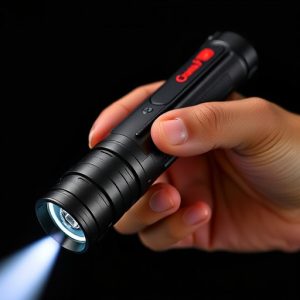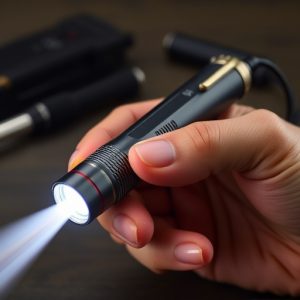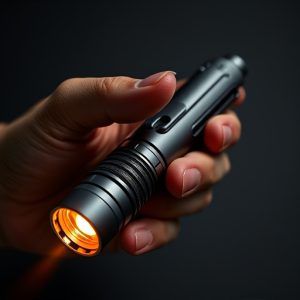Pen Stun Guns: Projectile vs Contact Weapons Compared
When choosing between a pen stun gun and other stun weapons, consider their unique mechanisms. Pen s…….
When choosing between a pen stun gun and other stun weapons, consider their unique mechanisms. Pen stun guns use kinetic energy to fire small projectiles that disrupt the nervous system from a distance, offering safety and discretion but limited range. Contact stun weapons, such as stun batons, use electrical currents through direct contact for consistent, reliable results in any conditions, ideal for close-quarters self-defense scenarios.
In the realm of personal defense, understanding the distinction between projectile and contact stun weapons is paramount. This article delves into the pros and cons of two popular options: pens stun guns. We explore how these devices operate, their effectiveness, legal considerations, and user experiences, offering insights to help individuals make informed choices for self-protection. By navigating this comparison, folks can equip themselves with the best tool for their specific needs in today’s digital era.
When considering self-defense options, understanding the distinctions between projectile and contact stun weapons is vital. Pen stun guns, a popular choice for personal protection, operate on a different principle than traditional stun batons or tasers. The former uses kinetic energy to fire small projectiles, like darts or beads, that disrupt the nervous system upon impact, rendering the target temporarily incapacitated. This method offers a certain distance between the user and their assailant, making it appealing for those seeking non-lethal force options.
In contrast, contact stun weapons, such as stun batons, employ electric current to disable an attacker through direct physical contact. Pen stun guns have gained popularity due to their compact size, allowing users to carry them discreetly. However, the range of effect is typically limited, requiring close proximity for maximum effectiveness. This characteristic makes them suitable for personal defense scenarios where space and timing are critical factors.
API responded with status code 524.
When comparing projectile and contact stun weapons, like pen stun guns, understanding their unique mechanisms is key. Projectile weapons rely on speed and distance to deliver a knockout blow, often using specialized darts or bullets that disrupt the nervous system from afar. This method offers some advantages in terms of safety for both user and target, as it minimizes direct physical contact. However, their effectiveness can be compromised by weather conditions and the need for accurate targeting.
On the other hand, contact stun weapons, such as traditional stun guns, deploy electrical currents to temporarily paralyze an individual through direct contact. While they may not have the same range or precision as projectiles, they remain effective even in adverse weather. The immediate impact of a physical connection ensures consistent results, making them popular choices for self-defense scenarios where speed and reliability are paramount.
When considering self-defense options, both projectile and contact stun weapons offer unique advantages. Pen stun guns, as a popular choice, provide a non-lethal option with a quick response time. While projectiles offer distance and less physical contact, contact stun devices can be more effective in close quarters. Ultimately, the best choice depends on individual needs, preference, and local legal considerations.


